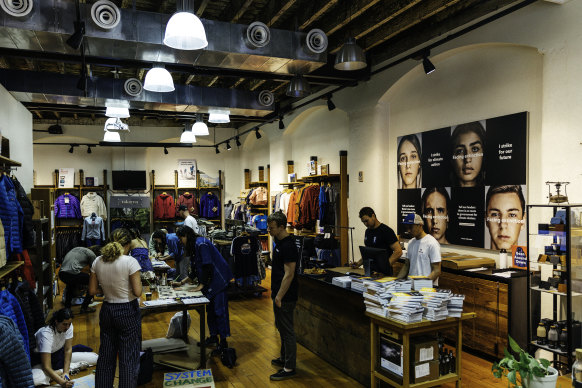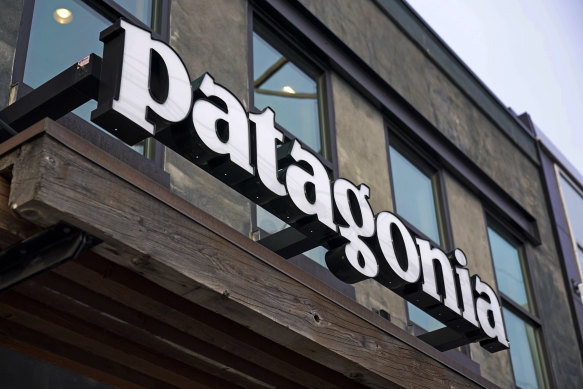Patagonia has been unafraid of putting people offside, even if it hurts sales. An example of this in action was how the company chose to respond to the rise of Silicon Valley tech and finance bros who were turning the Patagonia vest into an unofficial uniform.
The company quietly distanced itself by pulling back on co-branded orders with financial institutions and oil, drilling, mining companies that might be “ecologically damaging” and increasing co-branded orders from B-Corps.
“We’re probably loved and hated in equal measure,” O’Shanassy said, adding that plenty of people didn’t share Patagonia’s commitment to nature protection because of industry transition or because they “feel like they might be getting access restricted”.
“We support grassroots activism, people who are showing up in the forest, climbing trees that don’t get cut down,” he said. “We’re looking at those people going, ‘Thank you for the commitment that you’re putting to that.’
“But there’s clearly a big part of the community who are on the other side of that spectrum, whether that be in business, those who’ve got something to lose when cutting down trees or digging holes.”

Patagonia’s Sydney flagship store.
When thinking about the company’s core customer base, O’Shanassy says Patagonia does not target particular demographics according to age, for example, but seeks those who share the same values and converts them into highly engaged repeat customers.
“We don’t want to dull our focus on people who are at the sharp edge of alpine, ocean, river sports, because that’s people getting out and experiencing nature at its fullest,” said the country manager.
“When you’re out there experiencing nature, you’re going to get a greater appreciation for it and probably want to have a greater propensity to act in protection for it.”
Telling the story
While the brand has achieved global recognition by carving this niche, and leaning on surf culture in Australia, it has some way to go in deepening its foothold in the local market. The retailer has just eight stores in the country and a “careful and slow” approach to store expansion. It will seek to push harder through distribution channels.

Patagonia looks to play in the nexus between sportswear and environmental activism.Credit: (AP Photo/Gene J. Puskar)
To better communicate Patagonia’s point of difference, and generate more sales, storytelling is crucial.
Aside from the clothing it makes, the outdoor gear retailer has dedicated resources into creating films and documentaries, publishing books that draw attention to natural landscapes or ecosystems in distress, and explaining the innovation behind its organic, recycled and fair-trade materials to justify its premium pricing.
“When we just looked on the rack [from] a pure fashion perspective and a pure price perspective, it’s really difficult to demonstrate why you’re charging more without just feeling a perception of brand equity,” said O’Shanassy.
However, Patagonia hasn’t been immune to the headwinds and rising business costs impacting businesses of all sizes across every sector. A fortnight ago, global chief executive Ryan Gellert announced 41 job cuts in its North American head office, equivalent to 1 per cent of Patagonia’s workforce. None of the international markets, including Australia, had been affected, said O’Shanassy.
Sales in fiscal 2024 had been slower than last year, but the company was still growing, he added. Meanwhile, rival brand Kathmandu has suffered sales declines of 14.5 per cent in fiscal 2024, while Macpac’s like-for-like sales growth was flat.
Patagonia does not publicly reveal its sales figures, but its most recent set of unaudited figures, filed to the corporate regulator, showed its net sales fell to $170 million in the 12 months to April 30, 2023, down from $177 million the year before.
Getting cut-through with the consumer is also more difficult; O’Shanassy admits that the market of sustainable fashion is “definitely more crowded”.
“I think Patagonia is at its best when people get to the detail,” he said.
“That’s where we’re at our best because we’re a transparent company; we want to talk about our progress.“
The Business Briefing newsletter delivers major stories, exclusive coverage and expert opinion. Sign up to get it every weekday morning.


